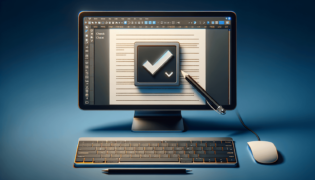
How to Use Track Changes in Word
To use Track Changes in Word, begin by selecting the Review tab on the ribbon. In the Tracking section, click the Track Changes button to turn on the feature. Now, any edits you make to the document will be tracked, showing insertions, deletions, and formatting changes. To review changes, navigate through each one using the Next and Previous buttons in the Changes section. Accept or reject changes individually with the Accept or Reject buttons, or all at once via the drop-down options.
Quick summary
- Activate Track Changes by selecting the Review tab and clicking the Track Changes button.
- All edits (additions, deletions, formatting) will be tracked.
- Use the Next and Previous buttons to review each change.
- Accept or reject changes individually or all at once.
At LearnWord.io, we aim to demystify the features of Microsoft Word to make your writing and editing process smoother. This blog post dives deeper into effectively using Track Changes in Word, ensuring you can collaborate with others efficiently or revise your documents with precision.
Turning on Track Changes
To start using Track Changes, head over to the Review tab located at the top of Word’s interface. In the Tracking group, you’ll find the Track Changes button. Clicking this button activates the feature for your current document. From this point onwards, any modifications you make will be tracked, indicating who made the change and when, if you are collaborating with others.
Understanding What Gets Tracked
With Track Changes enabled, Word monitors a variety of edits:
- Insertions: Any new text you add is underscored.
- Deletions: Removed text is displayed with a strikethrough.
- Formatting Changes: Any adjustments to font, size, color, or other attributes are noted in the margins.
These markings make it easy to see what has been added, removed, or altered at a glance.
Reviewing Changes
Reviewing changes is straightforward. In the Changes group under the Review tab, use the Next and Previous buttons to navigate through each edit. When you arrive at a change, you have the option to accept or reject it:
- Accept: To approve a change, click the Accept button. This will implement the edit into the document.
- Reject: If you disagree with a change, clicking the Reject button will discard it.
You can also accept or reject all changes in the document at once using the drop-down menus associated with each button.
Why Using Track Changes is Essential
Track Changes is a powerful tool for anyone needing to review or collaborate on documents. It not only shows what changes have been made, but also who made them and when. This feature is particularly invaluable for:
- Writers and editors working together on drafts.
- Teams collaborating on documents, ensuring transparency in revisions.
- Individuals tracking their own revisions over time.
By leveraging the comprehensive tracking and easy review process, Word users can streamline collaboration and ensure the integrity of their documents. Remember, at LearnWord.io, we’re always here to provide trusted advice and insights into making the most of your Microsoft Word experience.
Conclusion
Track Changes in Word is an essential feature for anyone looking to monitor edits, collaborate with others, or simply review their own work more efficiently. By following the steps outlined above to enable and use Track Changes, as well as understanding how to review and manage those changes, you can take full advantage of this powerful tool. Remember, whether working solo or as part of a team, Track Changes can help ensure your document evolves exactly as intended.
Featured Posts
- No pillar pages found.








